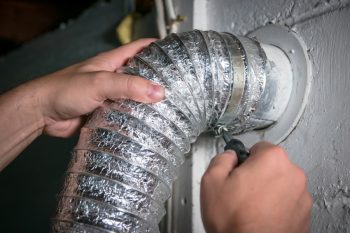
Replacing a burned-out electrical outlet might seem like a daunting task, but with the right tools and a bit of knowledge, it’s a task that can be accomplished by a handy homeowner. However, it’s crucial to remember that electricity is dangerous, and if you’re not comfortable or experienced with electrical work, it’s best to hire a qualified electrician. Let’s walk through the steps involved in replacing a burned-out electrical outlet.
To replace a burned-out electrical outlet, first, turn off the power at the circuit breaker and confirm that there’s no current with a voltage tester. Remove the old outlet by unscrewing the mounting screws and detaching the wires. Attach the wires to the new outlet (black to brass, white to silver, green/bare to green), push it back into the box, and secure with screws. Replace the wall plate, turn on the power, and test the new outlet. Always prioritize safety or hire a professional if in doubt.
Signs that an Electrical Outlet Needs Replacement
Before we dive into the process, it’s important to know the signs indicating that an electrical outlet needs to be replaced. Some common warning signs include:
- The outlet is not working, even after resetting the circuit breaker.
- There are visible burn marks, dark discoloration, or melting on the faceplate, outlets, or wall.
- The outlet feels warm or hot to the touch.
- Plugs fall out of the outlet or the outlet has loose receptacle slots.
- You notice flickering lights or inconsistent power supply when using the outlet.
- There’s a burning smell or smoke coming out of the outlet.
If you notice any of these signs, it’s time to replace the outlet to ensure the safety of your home and family.
Necessary Tools and Materials
Before starting the replacement process, gather the necessary tools and materials:
- A new electrical outlet that matches the circuit amperage rating.
- A wall plate.
- A Phillips and a flathead screwdriver.
- A non-contact voltage tester.
- Wire cutter/strippers.
- Needle-nose pliers (optional).
Safety Measures
Before starting the replacement process, take these safety precautions:
- Turn off the power to the outlet at the circuit breaker.
- Use a voltage tester to confirm that there is no current in the outlet.
- Wear insulated gloves and use tools with insulated handles.
- Do not touch any bare wires until you have confirmed that there is no current.
Removing the Burned-Out Outlet
- Unscrew the mounting screws and remove the wall plate.
- Gently pull out the receptacle, being careful not to touch the wires or terminals.
- Use the voltage tester to confirm that there is no current.
- Unscrew each screw and free the wire from under it.
Installing the New Outlet
- Attach the wires to the new outlet. The black (hot) wire connects to the brass-colored terminal, the white (neutral) wire connects to the silver-colored terminal, and the green or bare (ground) wire connects to the green-colored terminal.
- Push the new outlet back into the electrical box and secure it with screws.
- Replace the wall plate and secure it with screws.
- Turn the power back on at the breaker box and test the new outlet to ensure it’s working properly.
Common Mistakes to Avoid
While replacing an outlet, avoid these common mistakes:
- Not turning off the power.
- Incorrect wiring.
- Using backstab terminals.
- Leaving loose connections.
- Overloading the outlet.
Testing the New Outlet
To test the new outlet, use a multimeter or an outlet tester. If you don’t have these tools, you can plug in a device to see if it works. If the outlet is not functioning correctly, double-check your wiring or call a professional.
In conclusion, replacing a burned-out outlet is a straightforward process if done with caution and proper preparation. However, if at any point the task seems too complicated or dangerous, do not hesitate to call a professional electrician. Safety should always be the priority when dealing with electricity.
Frequently Asked Questions
What does a circuit breaker do and why is it important to turn it off before replacing an outlet?
A circuit breaker is a safety device that shuts off power to an electrical circuit when it detects a problem like an overload or a short circuit. It’s crucial to turn it off before replacing an outlet to prevent electrical shock or electrocution.
What are backstab terminals, and why should they be avoided?
Backstab terminals are holes in the back of the outlet where wires can be pushed in for quick installation. However, they often provide a weaker connection than screw terminals and can lead to loose wires over time. It’s safer and more reliable to use the screw terminals.
What is the difference between the hot, neutral, and ground wires?
In an electrical circuit, the hot wire carries the electrical current from the power source to the outlet. The neutral wire carries the current back to the power source. The ground wire is a safety feature that directs excess current into the earth in case of a fault.
What type of outlet should I buy for replacement?
The new outlet should match the amperage rating of the circuit. Most residential circuits in the U.S. are either 15 or 20 amps. You can usually find this information on the circuit breaker.
What should I do if the new outlet still doesn’t work after installation?
If the new outlet doesn’t work, it could be due to incorrect wiring, a problem with the circuit, or a faulty new outlet. Double-check your wiring first. If everything seems correct, consult a professional electrician to diagnose and fix the problem.











